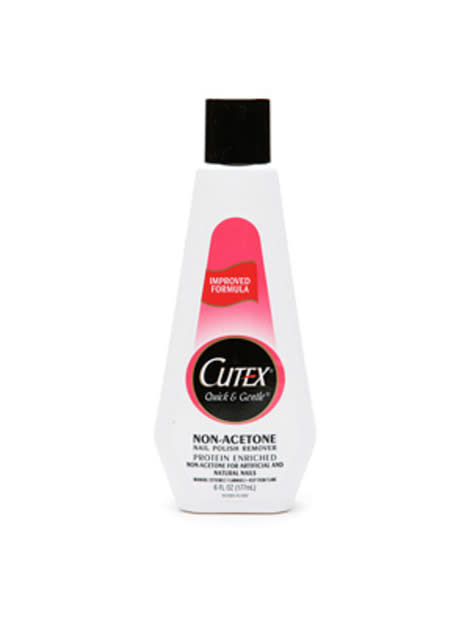The Healthiest Way to Remove Nail Polish

Shannon R.,SELF magazine
This summer-like weather made me want to run out for a fresh mani and pedi. I just love having a pretty set of freshly painted fingers and toes! However, when it comes to removing nail polish, the process becomes considerably less fun. Removing nail polish can be stinky and messy. There are plenty of nail polish remover options available, so let's take a closer look at how these removers work and which one is the best for you.
Related: Lose 2 Pounds a Week
How do nail polish removers work?
Basically, there are two different kinds of nail polish removers: acetone and non-acetone. Most brands carry both types--it's usually stated right on the front label. Both types contain a solvent (like acetone) that works by dissolving the hard film that's left on your nails by the ingredients in the polish. Nail polishes contain ingredients like resins, plasticizers, film formers and color pigments. All these ingredients work to give you a nice even coat of polish that dries quickly and evenly. The problem is, these ingredients aren't so easy to remove.
Related: 20 Superfoods for Weight Loss
Acetone Polish Removers
Acetone is a very powerful solvent and it works the best at removing polish. But it's also very harsh because it removes a lot of natural oils from your skin. In fact, sometimes your skin will look really white if you've used too much acetone on it. That means you've dried your skin out.
Pros: Most effective way to remove nail polish.
Cons: Harsh and very drying to nails, cuticles and skin. Women with nails that are dry or splitting should avoid using.
Best For: Infrequent polish removal, women who use really dark polish colors, removing shellac (no-chip) manicures.
Related: Yoga Moves for Flat Abs
Non-Acetone Polish Removers
Non-acetone removers use less aggressive solvents like ethyl acetate, isopropyl alcohol and propylene carbonate. Even polish removers labeled as "natural" or "organic" still use a solvent, they just don't use acetone. They also add moisturizing agents like glycerin, panthenol and soy to minimize the drying effect. However, these formulations don't dissolve the polish coating as efficiently so you'll have to work harder to take off the old polish.
Pros: Gentler than acetone, less drying (though these solvents still can be drying, just less so than acetone).
Cons: Don't work as well as acetone, requires more effort to remove (especially dark colors) and won't work on shellac (no-chip) manicures.
Best For: Frequent polish removal, light polish colors and women with dry or more sensitive skin and nails.
Bottom Line
Acetone is still the most effective way to remove nail polish. Unfortunately, it's harsh and can dry out skin and nails. While other solvents work, they don't work as well as acetone. This means more time that you have to spend rubbing polish off your nails. Whether you choose acetone or non-acetone, be sure to moisturize your hands and nails after polish removal to counteract the drying effects of the solvent.
More from SELF:
Superfoods for Flat Abs
10 Busy-Girl Buffer Moves
50 Healthiest Snacks
The Pasta Lover's Diet
